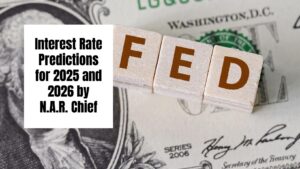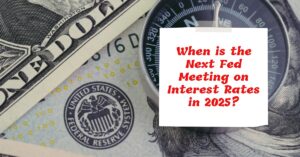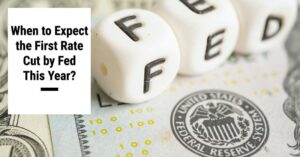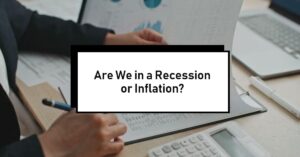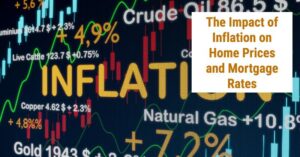The housing market is a complex web of economic factors, and understanding the interest rate predictions for the next year by NAR Chief Economist Lawrence Yun can help unravel some of that complexity. Yun anticipates that the U.S. Federal Reserve will implement six to eight interest rate cuts over the next two years, a significant shift from the current high rates that have restrained housing market growth. This prediction signals a potential turnaround for many homeowners and prospective buyers who have felt the pinch of increasing mortgage rates in recent years.
Interest Rate Predictions for 2025 and 2026 by NAR Chief
💸
Key Takeaways
- 📉 6-8 Rate Cuts Expected: Lawrence Yun predicts multiple interest rate reductions by the Federal Reserve through 2025.
- 📈 Challenging Year: 2024 has been difficult for home sales, following a slow recovery from 2023.
- 💵 Record Home Equity Withdrawals: Homeowners tapped into $48 billion in equity in Q3 2024, the highest in two years.
- 💰 Wealth Disparity: Average homeowner net worth is $415,000, while renters hold an average of $10,000.
- 📅 Sales Growth Prediction: A 10% increase in existing-home sales is forecasted for 2025 and 2026.
A Closer Look at the Current Environment During the recent 2024 NAR NXT conference in Boston, Yun shed light on the struggles that the housing market has faced. “2024 has been a very difficult year on many fronts,” he stated, highlighting that the anticipated rebound in home sales hasn’t occurred after the dismal performance in 2023. The Federal Reserve's recent decision to lower the federal funds rate by 25 basis points to a range of 4.50% to 4.75% reflects the ongoing efforts to stimulate the economy while managing inflation pressures.
There are encouraging signs as well. Employment rates have started to improve, and housing inventory is gradually on the rise, making it a critical time for potential buyers who have been holding off due to high rates. The recent data indicates a trend toward easing the high costs associated with home buying, and Yun believes this is a step in the right direction.
A particularly notable statistic is the $48 billion in home equity withdrawn by homeowners in Q3 of 2024. This figure represents the largest quarterly equity withdrawal in two years, signaling that many homeowners are leveraging their investments to improve their financial situations. The Intercontinental Exchange (ICE) projects that this trend toward home equity lending will continue, suggesting that homeowners are becoming more confident about their financial future (source: NAR).
The Wealth Gap: Homeowners vs. Renters Yun also pointed out a significant wealth gap between homeowners and renters, which highlights the long-term importance of homeownership. The net worth for homeowners in 2024 is estimated at approximately $415,000, while renters hold a vastly lower average net worth of $10,000. This stark difference illustrates why entering the housing market is vital for wealth accumulation. Yun emphasized, “If you don’t enter the housing market, you are in the renter class where wealth is not being accumulated.”
The growing number of renter households, which has risen to a record 45.6 million, shows an increase of 2.7% year-over-year. In contrast, homeowner households have seen a much smaller growth of 0.9%, totaling 86.9 million (source: Redfin analysis). This trend of growing renters underscores the urgent need for solutions to make homeownership more accessible, especially for younger generations seeking stability.
Predictions for Future Home Sales and Pricing Trends Looking ahead, Yun reveals a more optimistic picture for the housing market. He predicts a 10% increase in existing-home sales during 2025 and 2026, fueled by a combination of lower interest rates and improved economic conditions. New home sales are projected to increase by 11% in 2025 and 8% in 2026, creating a vibrant environment for both buyers and sellers.
In terms of home values, Yun forecasts a 2% increase in median home prices over the same period. While these projections indicate growth, they also illustrate that the road to recovery will be gradual rather than explosive. However, this consistent growth should provide reassurance to those looking to invest in their future through homeownership.
Recommended Read:
Political Influence: Navigating Uncertainty Another layer to consider is the impact of political contexts on interest rates and the housing market. Yun commented on how the upcoming presidential election might influence economic policies, particularly if a Trump administration returns to power. He noted, “Mortgage rates in his first term (around 4%) were the good old days.” But, he warned, “Are we going to go back to 4%? Unfortunately, we will not. It’s more likely that we’ll stabilize around 6%, with fluctuations typically between 5.5% and 6.5%.” This statement suggests a new normal for mortgage rates, which could shape buyer expectations and market dynamics for years to come (source: NAR).
Yun has also provided advice to the Federal Reserve regarding the timing of future rate cuts. He argues for a January timeline as more favorable than a December cut. With the current state of a substantial budget deficit, Yun sees a strategic need to mitigate the impact of high government borrowing on mortgage availability while fostering economic conditions conducive to growth.
Charting a Course for Future Stability Despite the obstacles that have hindered the housing market over recent years, there remains a strong undercurrent of hope. A stronger job market and the potential for rate cuts could provide the necessary boost for those wishing to enter the housing market. As more buyers become active in the market and inventory continues to improve, the stage is set for a robust recovery.
In closing, interest rate predictions for the next year by NAR Chief Economist Lawrence Yun banish some of the uncertainty clouding the housing market. With the expected interest cuts and signs of economic improvement, homeowners may soon find themselves in a more favorable landscape for buying and investing in property. The potential for a greater number of buyers entering the market, combined with increased inventory, remains a hopeful scenario for those looking to make the leap into homeownership.
Recommended Read:
- Fed Funds Rate Forecast 2025-2026: What to Expect?
- How Low Will Interest Rates Go in the Coming Months?
- Fed Just Made a BIG Move by Slashing Interest Rates to 4.75%-5%
- Market Reactions: How Investors Should Prepare for Interest Rate Cut
- How Low Will Interest Rates Go in 2024?
- Interest Rate Predictions for the Next 3 Years: (2024-2026)
- Interest Rate Predictions for Next 2 Years: Expert Forecast
- Impact of Interest Rate Cut on Mortgages, Car Loans, and Your Wallet
- Interest Rate Predictions for Next 10 Years: Long-Term Outlook
- When is the Next Fed Meeting on Interest Rates in 2024?
- Interest Rate Cuts: Citi vs. JP Morgan – Who is Right on Predictions?
- More Predictions Point Towards Higher for Longer Interest Rates
